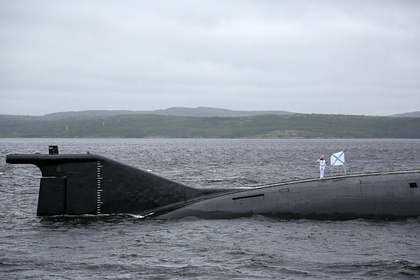Doctor of Military Sciences Konstantin Sivkov in a conversation with " Lenta.ru "called the possible reasons for stopping the course of the Russian nuclear-powered submarine missile cruiser "Eagle". According to him, this may be due to the ingress of foreign objects into the water intake, navigation error, winding fishing nets on the screw, and so on.
On August 4, the Danish Navy reported that the Russian nuclear submarine "Eagle" lost its course near the coast of the Danish island of Sehero. The ship was returning from St. Petersburg after the completion of the parade on the Day of the Navy. The Danish military said that the tug "Altai" began preparations for transporting the cruiser to the base, but the crew managed to restore the functionality of the systems. The Russian Defense Ministry has not officially commented on this information.
"Boats go through the Baltic Sea with great difficulty"
As the expert noted, the loss of the course may be due to the peculiarities of the Baltic Sea — it is very high-water, and the waters there are quite dirty.
"There are a lot of elements that have accumulated over many years that are dangerous for submarines, such as sunken ships, ammunition and other things," Sivkov explained. - Cruisers also have special water intakes that provide cooling of the nuclear reactor. I do not exclude that some object got there, provoking a forced stop of the course."
In addition, according to Sivkov, there is a possibility that the "Eagle" was just going at extremely low speeds, trying to avoid some kind of accident. Such boats have a very large draft and with such a movement it could well be perceived as a loss of speed, the expert explained.
"Of course, there may be other reasons, and very different ones. There could be a breakdown of on-board systems, a navigation accident that led to a stranding, the suction of foreign objects that led to the need for cleaning, the winding of fishing nets on the screw. In these cases, the movement really stops and there can be no question of any progress, " Sivkov summed up.
The expert stressed that the stop does not indicate the low quality of the Russian submarine, about any shortcomings. Such incidents occur regularly, both in the Russian fleet and in the American one. For example, two years ago, according to Sivkov, there was a whole series of navigation accidents when destroyers collided with civilian bulk carriers and tankers.
Earlier, a military source of RIA Novosti denied the incident with the loss of power, saying that the submarine passed the Danish Straits in normal mode as part of a detachment of warships of the Northern Fleet. It was noted that at the moment the cruiser continues to perform tasks for its intended purpose.
Natalia Belova

